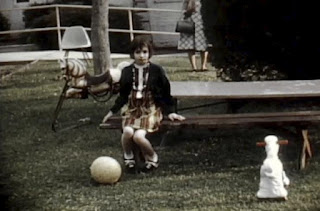200 Years Old: The World Longevity Record
Have you ever found something you previously lost when looking for something else completely different? You know, like when you search for your keys and you find your grade 9 report card? Or when you’re looking for your cellphone and you find that ring you thought you’d never see again?
In 2007, a group of Inuit hunters conducted their traditional annual whale hunt. They caught a bowhead whale, but they also found something unexpected—embedded in the whale’s blubber was part of a harpoon from the last time people had tried to hunt the whale. Based on the type of harpoon and markings on it, scientists were able to date it, and the harpoon turned out to be 120 years old.
The whale was estimated to be 130 years old (the harpoon tip was traced back to a New England factory from around 1880). This doesn’t seem to be an extraordinary age for a whale though. Since 1981, Inuit hunters have found harpoon fragments in half a dozen different whales.
Scientists confirmed the ages of whales with harpoon fragments using tissue samples harvested from the whales. Out of the five whales they examined, the youngest was about 90 years old and the oldest was more than 200 years old.
This is why bowhead whales are believed to be the longest-lived mammal on earth. By comparison, the longest-lived human was 122 years old when she died, and the oldest Asian elephants are known to reach 86 years of age.

The age of these whales is especially impressive considering how commercial whale hunting has decimated the population of all whale species worldwide.
Let’s put 200 years into perspective: it might seem a forever ago since the Toronto Maple Leaf’s last won the Stanley Cup, but bowhead whales can live five times longer than that.
A bowhead whale nearing the end of its lifespan today, could be twice as old as the first heavier-than-air human flight (Wright brothers in 1903). This same whale could have been born about the same time Italy became a united country (1861).
Inuit folklore tells us that whales live for two human lifespans. The hunters recognized scars and markings on specific whales that they saw, and passed those stories onto their children who then saw whales with the same identifying features.
Inuit folklore also told us where to find the missing Franklin expedition, which is also proving correct. That is a score of 2-0, which is better than Kim Kardashian’s marital track record.
Whale longevity is the subject of some interesting research being conducted which might help extend our time on the planet. Scientists are looking to the bowhead whale for clues on how to help human beings live longer. If cats have 9 lives, and whales can have 2, is there a chance we could tap into some sort of immortality gene and jump on the bandwagon?
The incidence of chronic illnesses such as diabetes, heart disease, and dementia increase as human beings grow older. There are also increased cancer rates with age. This is important because cancer, for instance, relates to the incorrect division of cells. This means the more cells you have and the longer they keep dividing, the greater the risk of cancer. Yes, that even means taller people are more likely to get cancer than shorter people.
Based on human cancer rates, bowhead whales should be riddled with cancer before they reach adulthood, but they’re not. They must have some genetic way to deal with the damaged cells that cause cancer and other age-related illnesses (after all, only Mr. Burns can get away with having three-stooges syndrome).
The research into the genetics of the bowhead whale (and other long-lived mammals) is just beginning, but the long lifespan of those whales offers us the dream of a tantalizing future. Organizations such as the Methuselah Foundation are funding work on the genetic sequencing of the bowhead whale in hopes that we’ll eventually get the chance to eat a lot more of these.


Comments
Post a Comment